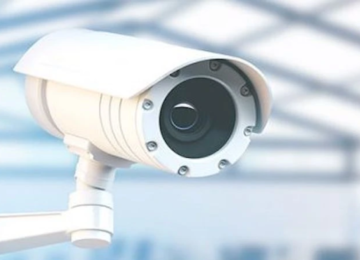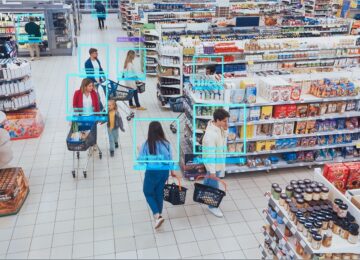What is shrink in retail? Understanding the hidden costs of theft and loss

This article was originally written in 2023 and has since been updated with new discoveries and research in 2025.
Shrink is not just a number on a report. It is a product missing from shelves, time pulled from customers, and a budget moved away from growth. For the retail industry (especially grocery, convenience, and pharmacy), shrink often looks ordinary: a few high-value items gone here and there, a miscount on a cycle counts sheet, a return that doesn’t add up.
Over weeks, those small losses become a big problem for retail businesses trying to remain profitable on tight margins.
This article explains what shrink is, why it happens, and how to cut it—without adding new headcount or ripping out your security system. It uses plain language and examples that store leaders can apply right away, with a focus on repeat theft patterns most teams underestimate.
What is shrink in retail and why it’s more than just missing stock
Shrink is the difference between what a retail store should have on hand and what it actually has. In accounting terms, it’s the gap between the inventory recorded on the balance sheet and the count found during physical inventory or rolling cycle counts.
Causes for inventory shrinkage range from internal or external theft to operational errors and damage. It’s monitored closely by retailers because shrink masks itself in normal sales records but quietly erodes margin, distorts forecasts, and pulls staff off the floor to fix errors.
Simply put, retail shrink is measured by comparing what your records say you should have with what you actually count:
- Start with recorded inventory (book value)
- Subtract the actual inventory from a verified count (cycle counts or physical inventory)
- Divide the difference by the recorded inventory to get the shrink percentage
- Convert the result to a dollar value if needed for planning and reporting
Some retail businesses also calculate shrink as a percentage of sales to understand the loss in relation to revenue:
(Total cost of losses ÷ Sales turnover achieved) × 100
Whichever metric you choose, consistency is key. Use the formula your finance team standardizes on, and apply it the same way across reporting periods so trends are accurate and comparable.
Shrink reduces sellable stock, increases out-of-stocks, and forces leaders to rebalance the supply chain, schedules, and buying plans. It shows up in margins, but it also shows up in the customer experience when shoppers can’t find core items.
Customer shoplifting: the leading cause of retail shrinkage
Most operators agree: external theft is the biggest cause of shrink, whether opportunistic or coordinated—and it is growing. Research from the National Retail Federation (NRF), with the Loss Prevention Research Council (LPRC), found that the average number of shoplifting incidents reported by retailers rose 93% from 2019 to 2023, and the dollar value lost per year grew by roughly 90% over the same period.
Because theft tactics evolve, many retailers are rethinking where and how losses occur.
Two shifts stand out:
- Self-checkout: The convenience is real, but so are “missed scans” and confusion that lead to loss, including accidental losses and intentional theft. Academic and policy discussions in 2024–2025 note a higher shrink at self-checkout and the downstream impact on staff time and customer frustration.
- Organized retail crime: Organized retail crime groups target multiple stores and resell goods online. U.S. authorities describe organized retail crime as large-scale theft for resale, often involving coordinated “boosters” and external parties who resell goods illegally.
Equally important is the quieter (often underestimated) repeat theft by familiar faces. Profiles vary—anyone can steal—and commonly targeted items include food, cosmetics, and DIY goods.
Teams miss repeat theft because the person blends in, buys small items, and is polite. Repeat offenders can run for months, even years, if no one sees the pattern. That’s where smarter detection matters. Shoplifting is an offense across markets, and penalties exist in every jurisdiction; the specifics vary by country and case.
Employee theft, administrative errors, and other drivers of inventory loss
Shrink is not only about shoplifters. It also reflects everyday mistakes and process gaps.
Treat these as primary causes to investigate, not just a list of blame:
- Internal theft: This includes under-ringing for friends, misuse of employee discount, and unauthorized voids or refunds. Train on policies and use exception reporting as part of your inventory management playbook.
- Administrative or operational errors: Accounting errors, bad unit conversions, and receiving mistakes roll up into administrative or operational errors that inflate or deflate shrinkage numbers. Tighten receiving and spot-check sales records and transfers.
- Return fraud: From wardrobing to counterfeit receipts, returns present risk across channels. NRF’s 2024 returns analysis estimates hundreds of billions in returns annually, with a material share tied to fraud or abuse, according to the NRF 2024 retail returns report.
- Vendor fraud: Short shipments, substitutions, or falsified credits. Vet new vendors, reconcile purchase orders, and escalate recurring gaps.
- Breakage and expiry: Perishables spoil. Fragile goods break. Build simple routines to markdown and record accurately—these operational errors are preventable losses.
- Process gaps and human error: Mis-scans at checkout, wrong counts in the back, or mislabeled pallets in the supply chain. Clear SOPs and micro-trainings help store associates avoid repeat mistakes.
Tools like RFID tags can improve stock visibility and reduce retail loss by speeding counts and exposing gaps between systems and shelves.
Operational loss: how shrink impacts your entire store
Shrink is security’s problem on paper, but it is retail management’s problem in practice. It ripples through the business:
- Time: Associates spend hours on camera pulls and paperwork instead of helping shoppers.
- Morale and safety: When retail crime feels like rampant theft, staff confidence drops. Retail associations in the U.K. report more than 2,000 daily incidents of violence and abuse in 2023/24, a reminder that calm, early interventions matter for worker safety, according to the BRC 2025 crime survey.
- Availability: Empty pegs hurt customer experience and sales.
- Budget: Money moves from wages, maintenance, or upgrades to cover losses. To remain competitive, leaders need steadier, predictable shrink.
Treat shrink as a business-wide drag, not just a security metric. The right tools make a big difference when they surface risk early and fit daily operations.
Loss prevention strategies retailers use to tackle shrink
Most stores already use a mix of people and technology.
Think of this stack as layers:
- Surveillance cameras and security cameras deter, document, and support investigations. Place them legally and thoughtfully—coverage at entrances, exits, and especially self-checkouts is essential. Reinforce coverage in sensitive aisles such as alcohol and cosmetics, and review shrink by category so you can strengthen the right departments.
- Guards and greeters create a presence but can’t watch everything. Staffing levels depend on store size, and human attentiveness has limits—cameras and alerts help agents stay effective.
- Policies and employee training reduce human error and clarify interventions.
- Inventory management routines—cycle counts, audits, and exception reports—catch mismatches.
- RFID tags move counting from hours to minutes and can flag movement exceptions.
Each layer helps. Each has limits. Cameras record more than humans can review. Guards are reactive. Paper processes break under volume.
The question becomes simple: what makes these layers smarter and more consistent?
Reduce shrinkage with intelligent video and real-time alerts
Modern computer vision adds that consistency. Intelligent video surveillance on shrinkage shifts the burden from people to AI—analyzing video data and sending a short clip when it sees gestures tied to concealment, walkouts, or potential shoplifters.
The AI doesn’t need to know who someone is to be useful. It looks for what hands, arms, and bags are doing in the moment, then alerts the right person.
What changes for busy stores:
- Real-time insights: Alerts usually land within about a minute, so staff can step in before the product is gone.
- Pattern visibility: Repeated events by aisle or hour tell you the root cause to address—staffing, fixtures, or product placement.
- No rip-and-replace: The AI layer works with existing cameras and NVRs—new technology without new wiring.
SME teams point to two standard signals—first, tote-bag concealment during normal shopping, one item at a time, week after week.
Second, “deblistering” at the shelf—opening medication packaging out of sight. When an alert hits, store associates can approach, offer help, and de-escalate. Over time, those alerts become clear real-time insights for planning and training.
What most teams underestimate about repeat theft
The losses that hurt most rarely look dramatic. They look like routine shopping. A polite regular. A tote in the cart. One premium item disappears, then check out with a small basket.
Managers often miss this because events are spread across days and feel low-risk in the moment. Repeat offenders are underestimated because they blend in and may be known by the staff as a friendly, regular client.
The fix is visibility—alerts on bag behavior or on-shelf package tampering that surface the pattern. As one testimonial, a Shoprite manager shared, “The alerts helped us catch repeat concealments in just the first week. Before, we thought it was [a] random loss. Now we can see the pattern clearly.”
It also explains why the fastest, no-hire change a manager can make is simple: “Have an AI connected to their cameras.” The AI watches for the right seconds, and humans stay in control.
How to diagnose shrink without slowing down the day
If the national retail security survey or chain benchmarks suggest you’re high on shrink, start with a quick, practical audit. You don’t need a task force to see where risk concentrates.
Here are five checks that operators can run quickly to surface issues and prove early wins:
- Map the week: Mark the hours and aisles with the biggest gaps between expected and actual counts.
- Watch the journey: Walk a few SKUs from the back room to the shelf to checkout. Look for broken SOPs and operational errors.
- Check returns: Review the return fraud policies and exception reports. Use a second-person check on large, no-receipt returns. Refer to industry returns analysis for context on the increasing prevalence of fraud.
- Tighten the stack: Confirm camera placement near checkouts and sensitive aisles with high-value items. Align with policies so associates aren’t guessing.
- Pilot alerts: Turn on gesture-based detection over a few cameras where shrink clusters. Adjust with your team as you learn.
Tackling loss prevention in manageable steps builds confidence, shows results, and creates a stronger foundation for scaling AI-driven surveillance across the business.
Answers to common questions from owners and ops leads
Before making changes on the floor, most retailers have the same questions about cost, rollout, and day-to-day impact. Here are clear answers to the questions owners and ops leads ask most often.
Is shrink just theft?
No. Shrink includes internal theft, external theft, damage, and mistakes. Some loss is malicious; much of it is process failure or accidental losses.
Should we focus on ORC or store-level issues first?
Both. Organized crime is real, and organized retail crime cases get headlines. But steady, low-visibility shoplifting and mistakes often result in more significant losses in a single location. Government and trade sources define ORC clearly and show why it matters, but day-to-day prevention still starts in-aisle.
Do we need new cameras?
Usually no. Most stores can add AI analytics to existing coverage—surveillance cameras that already watch entrances, high-value items, and self-checkout. Modern tools integrate with what you have.
Where do RFID and analytics fit?
Use RFID tags to count fast and find gaps. Use AI video for behavior you can act on. Used together, they reduce theft, prevent shrinkage, and make it easier to train employees on real cases.
Will this help us remain profitable in a tough year?
The goal is steadier control, not magic. The combination of better coverage, earlier alerts, and cleaner processes helps stores remain competitive even when margins are thin.
A practical plan you can start this month
Getting started doesn’t require a major rollout or new infrastructure. Small, focused steps can prove value quickly and build momentum for larger adoption.
Here’s how:
- Pick one aisle with concentrated loss.
- Turn on gesture alerts for concealment and on-shelf tampering.
- Set simple roles so one person reviews clips and one person walks the floor.
- Measure weekly through counts, not anecdotes. Track the dollar value recovered and the time saved.
- Share wins with the team so loss prevention efforts feel real and supported.
By piloting in one aisle, assigning clear roles, and measuring results, retailers can see impact in weeks—not months. That confidence builds the case for scaling smarter security practices across the entire store.
From chasing incidents to controlling patterns
Shrink will always exist in retail—but losing control doesn’t have to. The stores that get ahead measure clearly, act early, and support their people with tools that fit daily operations. Gesture-based alerts and intelligent video analysis turn surveillance cameras into calm assistants—spotting patterns, surfacing anomalies, and giving staff real-time insights they can use.
That balance protects margins, improves customer experience, and helps retailers remain competitive even in years when theft and loss are on the rise.If you’re ready to see what that looks like on your aisles, request a personalized demo with our team. The right tools make a big difference—and you don’t need more people to get started.
The most popular
Related news
Discover what Veesion can do for you. Do you have one or more stores?
Our team will contact you within 48 hours





